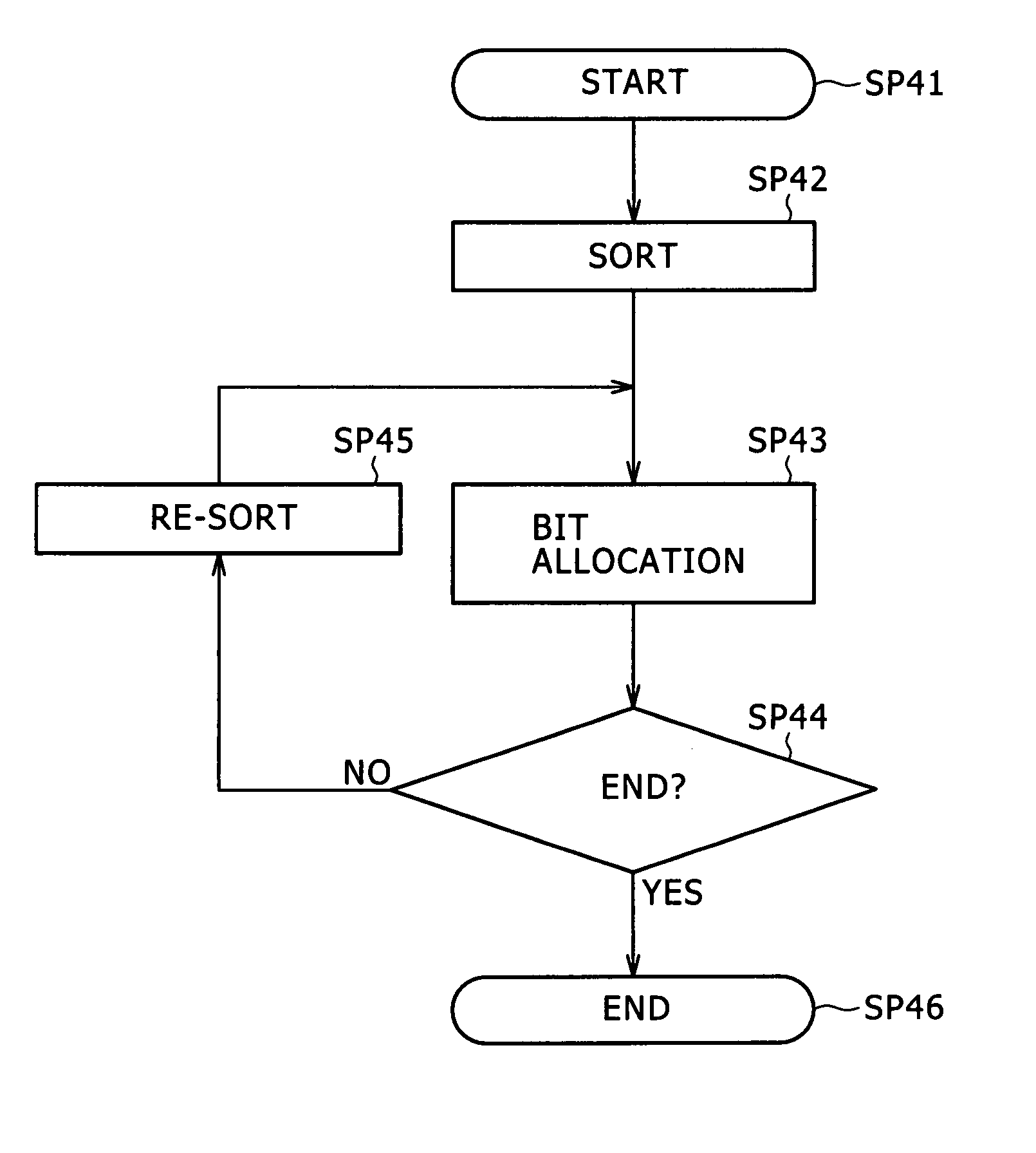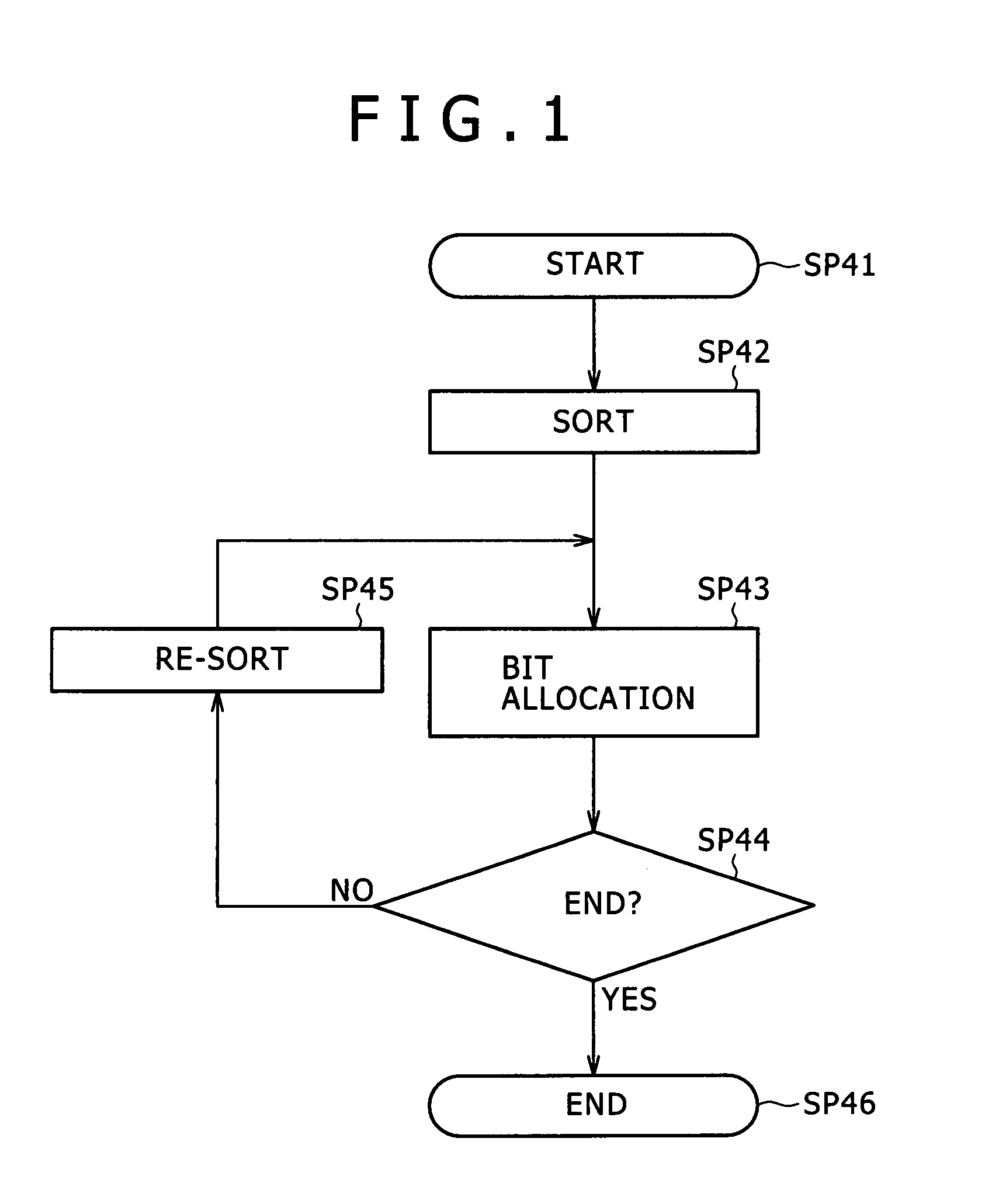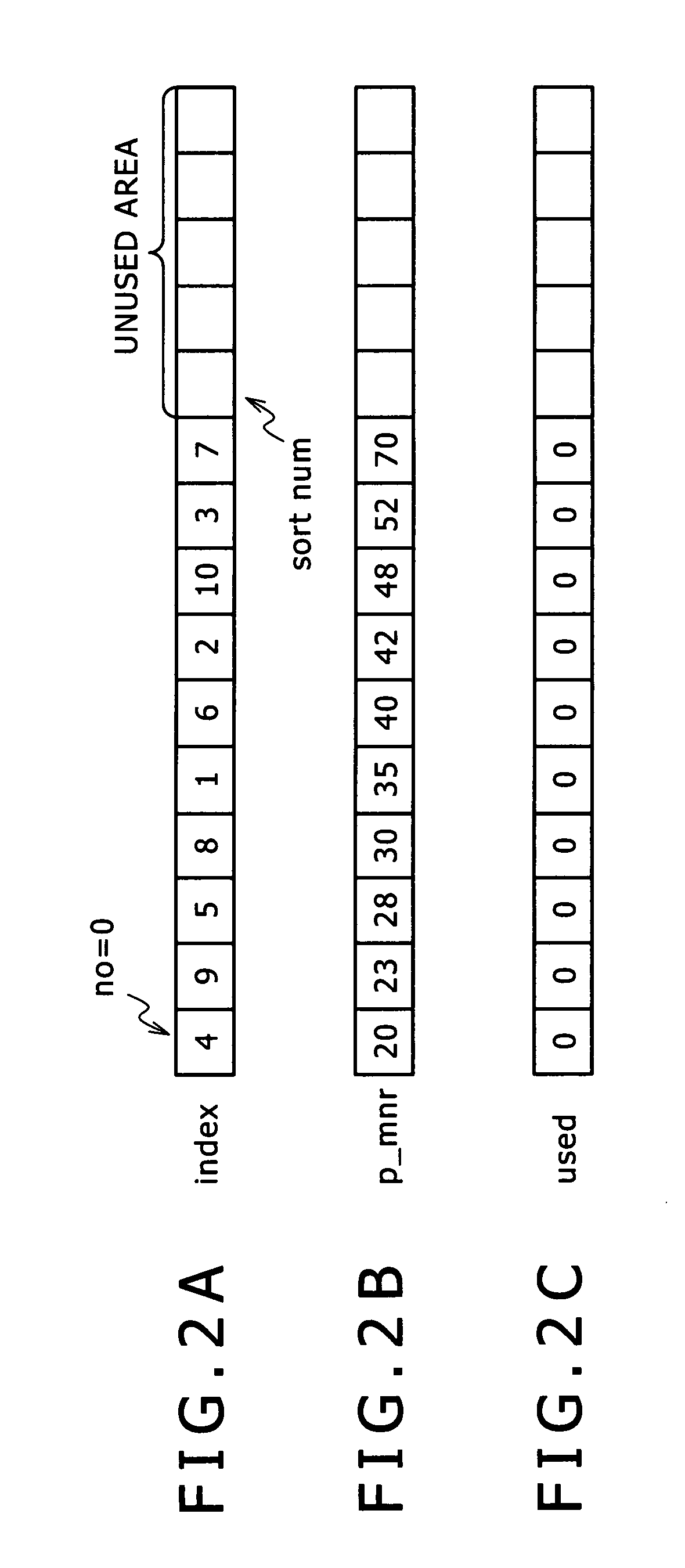Audio signal encoding method, program of audio signal encoding method, recording medium having program of audio signal encoding method recorded thereon, and audio signal encoding device
a technology of audio signal and encoding method, which is applied in the direction of code conversion, speech analysis, instruments, etc., can solve the problems of heavy processing load in the encoding process in the past, and achieve the effect of reducing processing load and reducing processing load
- Summary
- Abstract
- Description
- Claims
- Application Information
AI Technical Summary
Benefits of technology
Problems solved by technology
Method used
Image
Examples
first embodiment
(1) Configuration of Embodiment
[0061]FIG. 1 is a flowchart of a processing procedure of a dynamic bit allocation unit 4 in an encoder according to a first embodiment of the present invention, for comparison with FIG. 17. The encoder according to the first embodiment is formed in the same manner as the encoder described above with reference to FIG. 16 except for the different processing procedure of the dynamic bit allocation unit 4 in the encoder according to the first embodiment. Therefore the following description will be made using the configuration of FIG. 16 as appropriate.
[0062] The dynamic bit allocation unit 4 performs the processing procedure for each block set in an audio signal S1, and thereby assigns bits to each subband signal. Starting this processing procedure, as described above with reference to FIG. 17, the dynamic bit allocation unit 4 calculates the MNR of each subband signal. The dynamic bit allocation unit 4 then proceeds from step SP41 to step SP42, where t...
embodiment
(3) Effect of Embodiment
[0113] According to the above configuration, MNRs are sorted in advance and a subband signal to which to allocate bits is detected. When a recalculated MNR is to be sorted, the combination of the recalculated MNR is stored at an end of a row of MNR combinations already stored in the memory, and thereafter the order of arrangement is changed between the combination of the recalculated MNR and a combination stored at an immediately preceding position until an MNR having a lower value is detected, whereby a sort is performed. It is thus possible to utilize the sort result so far effectively, and sort the MNRs by partly changing the sequence of the sort result so far. Hence, the load of processing can be reduced as compared with the existing example.
second embodiment
[0114]FIG. 9 is a flowchart representing a processing procedure of a dynamic bit allocation unit 4 in an encoder according to a second embodiment of the present invention, for comparison with FIG. 1. The encoder according to the second embodiment is formed in the same manner as the encoder described above with reference to FIG. 16 except for the different processing procedure of the dynamic bit allocation unit 4 in the encoder according to the second embodiment. Therefore the following description will be made using the configuration of FIG. 16 as appropriate. In addition, the dynamic bit allocation unit 4 is formed in the same manner as in the encoder described above with reference to FIG. 1 except for a different re-sort process in step SP100. Thus, in the following description, the same processes as those of the dynamic bit allocation unit 4 described in the first embodiment are identified by the same reference numerals, and repeated description thereof will be omitted.
[0115] As...
PUM
 Login to View More
Login to View More Abstract
Description
Claims
Application Information
 Login to View More
Login to View More - R&D
- Intellectual Property
- Life Sciences
- Materials
- Tech Scout
- Unparalleled Data Quality
- Higher Quality Content
- 60% Fewer Hallucinations
Browse by: Latest US Patents, China's latest patents, Technical Efficacy Thesaurus, Application Domain, Technology Topic, Popular Technical Reports.
© 2025 PatSnap. All rights reserved.Legal|Privacy policy|Modern Slavery Act Transparency Statement|Sitemap|About US| Contact US: help@patsnap.com



